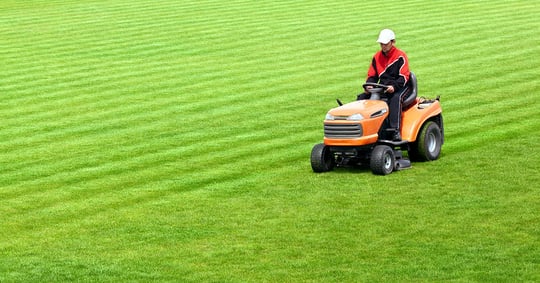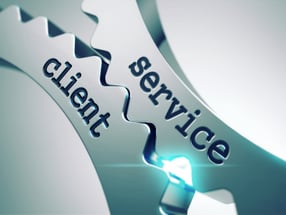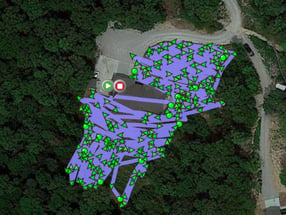Having trouble finding employees for your lawn and landscaping business? You’re not alone. Back in 2019, 92% of landscaping companies reported having trouble getting qualified applicants for open positions. The pandemic has not made filling those roles any easier, even though demand for landscaping work is at an all time high. The National Association of Landscape Professionals is pushing an effort to add 100,000 positions to the landscaping industry by 2025 to meet ongoing demand. But none of that helps businesses looking to grow now.
If you can’t find new workers, you need to make sure you are retaining your current workers and helping them become more efficient and more productive. Data is key to creating a training program that energizes and engages your employees, while also helping you identify ways to get more revenue out of each job, and more jobs out of each day.
Use GPS data to closely track mowing jobs
GPS tracking is an excellent way to prevent theft, grow your business, and cut down on unnecessary expenses. But think more broadly and you’ll find that the data received from GPS tracking each piece of equipment provides a wealth of information to enhance your business.
One unique approach to GPS tracking is carefully following mower paths, providing minute by minute information about every place your employees touch on a job site.
So what’s helpful about that?
Here are some quick and easy ways you can use this data to improve your teams, your estimates, and your business.
Accurate billing and estimates
The winning combination of GPS tracking for vehicles and equipment gives you a full picture of what really happens at a job site:
- Geofence alert when a crew arrives at a job location.
- Ignition alert when a mower is turned on.
- Full time and path data of everywhere the mower was used on the property.
- Ignition alert when a blower is turned on.
- Full time and path data of everywhere the blower was used on the property.
- Geofence alert when a crew leaves the job location.
Put all that together and there are some helpful uses. Score your crews for different types of jobs based on size of property and work to be completed. Identify which crews are most efficient at which types of jobs and dispatch accordingly.
Take a look at your past estimates—does time estimated match how long the jobs actually took to complete? Are you underbidding for work that will take longer and leave you less time for more jobs in a day?
Improve efficiency (and maybe find some additional revenue)
Go back to the jobs where crews were the slowest and take a closer look at the data. What time did the crew arrive, and how soon after arrival was tracked equipment put to use? Investigate any unusually long gaps and you may find:
- Crews are taking time to idle in the vehicle rather than getting straight to work. That’s time and money lost. (Pro tip: set idling alerts!)
- Crews are removing branches or debris from the property before they can begin mowing. That’s an additional service to add to the bill. (Pro tip: Add dash cams to your solution. Record any extra un-bid work your crew must tackle to complete the job properly. Use the video to discuss changes in the bill with your customer.)
Now check the mowing, blowing, or other tracked equipment paths. Are they using the most efficient pattern with the fewest turns? Train your crews to evaluate each lawn and property and look for the fastest method of completing the job. (Extra: this guy has some interesting hypotheses about the most efficient method.)
And just to make sure you’re rising above the competition and providing added value to your customers, use that data to ensure that your crews switch directions each time they visit the same job site. This will prevent grass from growing in one direction, which not only makes the lawn less attractive but makes mowing more difficult.
Seriously, don’t forget dash cameras
As discussed above, dash cams are a great way to show customers extra work that may have been required when crews arrived at a job. If a regular customer wants to know why the bill increased, use video proof to show children’s bicycles that needed to be moved, large branches blocking equipment paths, or anything else that might be delaying your crews.
It’s also a great way to make sure crews are not squeezing in a little freelancing from neighbors offering cash for a quick mow. That’s time spent not on your jobs and not growing your business with your equipment.
Dash cams are also a great way to protect your crews and company from liability in the event of an accident. You’ll have the footage—as well as the GPS data for speed and brake use—to exonerate drivers and give police and insurance companies an accurate and unbiased record of the accident.
Wait, there’s Lawn Mower Trackers
Adding trackers to your mowers has even more value when you consider the ongoing lawn mower shortage. Find out how GPS can help you protect and maintain your existing equipment so you can mow past the competition waiting for replacements. (Read our blog on battling the lawn mower shortage.)
Want to know more about the solutions discussed in this article? Click to learn more about Linxup, Linxup Dash Cams, and Fleet Tracking solutions. Or reach out to us, click here on your phone or dial: 1-877-907-0801.


